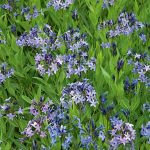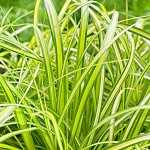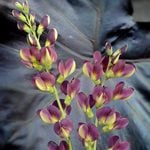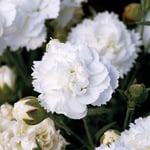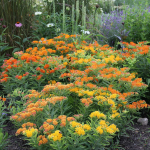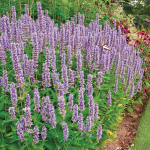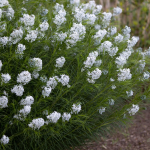Product Details
In May, just when spring bulbs and wildflowers are at their peak, this Creeping Phlox spreads out a carpet of deep bluish purple blossoms that are a favorite nectar source for native insects as well as butterflies. Now a classic, 'Sherwood Purple' was found in a Connecticut garden and named by the renowned rock gardener Lincoln Foster. It has the deepest color of any Phlox stolonifera selection that we know.
Phlox stolonifera (Creeping Phlox) is native to the Appalachian Mountains. In spring, it carpets shady and partly shaded woodland areas and the banks of streams with flowers. The loose clusters of scented blossoms are held aloft like miniature bouquets on 6–8” stems. The carefree plants spread gradually to form weed-smothering mats. Their rounded leaves generally top out around 3” tall and serve as an attractive year-round ground cover. Creeping Phlox is an enchanting and low-maintenance addition to woodland and shade gardens.
The varied, versatile, and indispensable Phlox genus includes almost 70 species of perennials and annuals. The majority of these low-maintenance plants are native to North America where they can be found in a range of habitats from woodlands and meadows to rocky alpine areas. All have tubular flowers that attract hummingbirds, hummingbird moths (also called hawk moths), long-tongued bees and butterflies. Most have a spicy vanilla-clove perfume that delights us as well.
For information on growing and care, click Growing Guide.
Shipping
HOW PLANTS ARE SHIPPED
The size of the plants we ship has been selected to reduce the shock of transplanting. For some, this means a large, bareroot crown. Others cannot travel bareroot or transplant best if grown in containers. We ship these perennials and annuals in 1 pint pots, except as noted. We must point out that many perennials will not bloom the first year after planting, but will the following year, amply rewarding your patience. We ship bulbs as dormant, bare bulbs, sometimes with some wood shavings or moss. Shrubs, Roses, vines, and other woody plants may be shipped bareroot or in pots. The size of the pot is noted in the quick facts for each item.
WHEN WE SHIP
We ship our bulbs and plants at the right time for planting in your area, except as noted, with orders dispatched on a first-come, first-served basis by climate zone. We also ship a wide range of containers and planters, tools, supplies, fertilizers, garden wear, garden decor items, as well as indoor decorations like wreaths and dried bouquets when available. Estimated dates for shipping are indicated in the green Shipping Details box for each item. Please supply a street address for delivery. Kindly contact us with two weeks notice, if you'll be away at the expected time of delivery.
OUR GUARANTEE
We guarantee to ship plants that are in prime condition for growing. If your order is damaged or fails to meet your expectations, we will cheerfully replace or refund it. Please contact our Customer Service Department at 1-800-503-9624 or email us at [email protected]. Please include your order number or customer number when contacting us.
Reviews
There are no reviews yet. Be first to Write a Review.
Growing guide
Latin Name Pronunciation: floks
This important genus of valuable garden plants includes reliable and colorful species that bloom both early and late, in sun and shade, and in a range of rich colors that is equaled by few other genera. Most Phlox grow best in full sun (or partial shade in the South) and moist, well-drained soil.
P. divaricata laphamii is at its best in partial shade and in well-drained soil enriched with organic matter. Plants prefer soil with a slightly acid to neutral pH. They have an informal habit and root where the stems touch the ground, allowing them to form a ground cover where conditions suit them. Cut flowering stems to the ground after the blooms fade to keep plants looking tidy.
P. paniculata and, to a lesser extent, P. carolina and P. maculata are susceptible to powdery mildew, especially in dry soil. Water deeply during dry spells to reduce the incidence of disease, and dust with sulfur (available at most garden centers) beginning in early summer. Thinning half of the shoots when 6″ tall in spring (to allow better air circulation) also helps keep mildew at bay and encourages plants to produce larger and longer-lasting flower heads.
Divide P. paniculata every few years, replanting sections from the edge of the clump and discarding the woody center.

